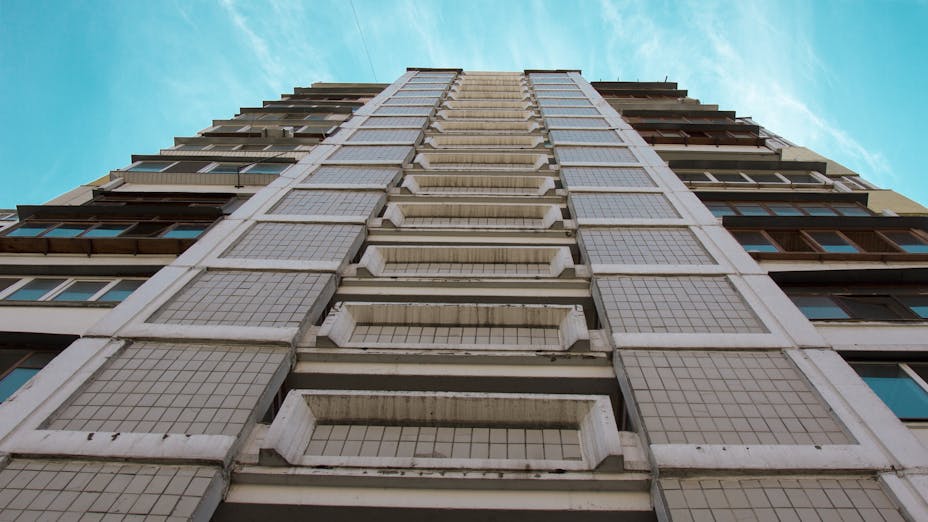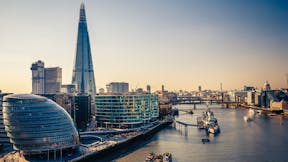What has changed to make homes safer from fire since Grenfell? Bluntly, almost nothing. Every piece of official government guidance that allows Grenfell-type facade materials on tall buildings is still in place.
The question we heard in Parliament earlier this month, and from residents all around the country, is what are we waiting for? Why is a system that led to so many lives being lost still in place?
In part, the answer is that the fire safety system in England has been shaped to a significant degree by the industry, for the industry. This largely self-regulated “test and study” compliance regime remains firmly in place.
The main deficiencies of this system are the BS 8414 large-scale fire test and “desktop studies”.
The BS 8414 test is used if a building owner wants to specify cladding or insulation that does not satisfy the non-combustible criteria for high-rise buildings. It is not a reliable measure of fire safety for these building types. It’s a laboratory test that doesn’t include the weakest design spots like windows, or ventilation openings, and does not take account of onsite workmanship. As seen in the post-Grenfell DCLG tests, one can install substantially more fire barriers than one would likely see on a real building. Simply put, the tests don’t reflect real-life conditions.
In addition, the BS 8414 test allows wide latitude to manufacturers paying for the tests to determine key parameters that can have a direct bearing on the pass/fail result. Since the test reports are kept confidential, the public does not know if what is built is what was tested.
The main laboratory in the United Kingdom that is equipped and licensed to conduct these tests is the Building Research Establishment (BRE). Manufacturers pay the BRE to test their materials, which means that there is a commercial interest in perpetuating the status quo.
Steve Reed MP, who led a Westminster Hall debate early this month on this very subject, reflected that “the Building Research Establishment’s fire testing system is so weak that manufacturers can [detail] their own materials, and can then keep quiet about how many tests their materials fail before they eventually get a result they want... Conflicts of interest are everywhere in this system”. Yet the BRE is a key player in shaping the official response to Grenfell Tower.
The outgoing BRE chief executive sits on the independent expert panel advising the Government on fire safety since Grenfell Tower. The BRE managing director chairs the Hackitt Review working group on products and sits on the working group on updating building regulations and guidance.
The BRE’s commercial interest should disqualify it from these roles. The government should not allow a task so important for public safety to be directed by an organisation with such an obvious conflict of interest.
Even more concerning, however, is the use of desktop studies to determine if certain types of cladding and insulation can be used on the outside of buildings. In a desktop study, a manufacturer hires a consultant to proffer an opinion on whether a proposed facade system would be safe in a fire. One needs no specific qualification to carry out a desktop study. There is no requirement to publish the study, and the public has no legal right to see it. Yet their safety could well depend on it.
To our knowledge, no other country allows this form of “compliance” with building safety regulations. Opinion-based desktop studies have never been explicitly included in official guidance, yet the Government is now drawing up plans to formalise them for the first time. That means weakening fire safety standards still further, despite Grenfell.
David Lammy MP reflected, “It means that someone can sit in their office and determine a building’s fire [standards] without going out and getting into the detail. That is extraordinary, in light of the loss of life. None of us would have thought it possible that nine months later we would even be debating that possibility”.
Ultimately, industry should not design this country’s fire safety system. The Government should do so, based on simple, clear, and unambiguous principles. Prescriptive solutions requiring non-combustible cladding and insulation for high-rise and high-risk buildings are already common in many European countries.
Taking this approach would sweep away the ambiguity and uncertainty that large-scale testing and desktop studies inevitably create, and provide a solid foundation for protecting public safety. The Royal Institute of British Architects, the Association of British Insurers, and the Communities and Local Government Committee, have already endorsed this approach. It’s now the Government’s turn, yet, as Jim Fitzpatrick MP, said, “we have heard nothing from the Government”.
Their silence is troubling. Steve Reed put the question to Housing Minister Dominic Raab in Parliament: “Is the Minister really going to do nothing and risk a second Grenfell Tower fire?”
He should not wait any longer to do the right thing. This is about people’s lives, and their right to feel safe in their own homes. The Government must act, and act now.




